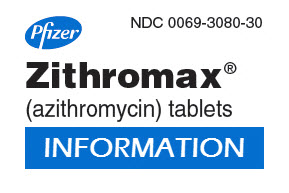
The effectiveness of Azithromycin at chlamydia
 Modern clinical practice and numerous reviews state that azithromycin in chlamydia is prescribed by most physicians as the main drug. However, some physicians believe that it is not advisable to use azithromycin in chronic chlamydia. It is effective only at the early stage of the disease until three months after infection.
Modern clinical practice and numerous reviews state that azithromycin in chlamydia is prescribed by most physicians as the main drug. However, some physicians believe that it is not advisable to use azithromycin in chronic chlamydia. It is effective only at the early stage of the disease until three months after infection.
What are the reasons for these statements? Is the treatment of chronic chlamydia with azithromycin effective or does this antibiotic help only in the early stages of the disease?
Many diseases, for example, the common cold, flu, sore throat have clearly pronounced symptoms, which manifest themselves in a few hours from the moment the virus or bacteria enters the body. However, there are diseases that "make themselves felt" in a few weeks or even months from the time of infection, and the manifestation of the same pathogen is not the same. These pathogens include the microorganism Chlamydia trachomatis, which causes a disease called chlamydia.
Modern science knows 15 varieties of chlamydia, which are the causative agents of conjunctivitis, pneumonia and other diseases of the respiratory tract, a number of diseases of the cardiovascular system, ornithosis, often leading to death. The most common for today is genital-sexual clamidiosis, which affects about 1.6% of the world's inhabitants.
Symptomatology
The main symptoms of chlamydia include the following manifestations of the disease.
In women: vaginal bleeding in the intermenstrual period. Bleeding from the channel of urination, internal itching in the pelvic region, vaginal mucous discharge of unpleasant odor.
In men: urethral bleeding during urination and ejaculation; itching.
Important! The above-mentioned health problems can be caused by other pathogens and only a clinical examination can confirm or disprove the fear of infection with chlamydia.
As a rule, the disease in both women and men, the first 2-3 months, is asymptomatic. Further, perhaps, 3 variants of the development of events.
1. Rapid manifestation - the immune system is unable to fight the causative agent of Chlamydia trachomatis or, due to the physiological characteristics of the organism, the causative agent multiplies more rapidly than the corresponding antibodies (phagocytes) are produced. In this case, the main symptoms appear at an early stage of the disease (up to three months from the time of infection).
2. The immune system inhibits the reproduction of chlamydia. In this case, the disease can manifest itself through an indefinite time, when the body weakens.
3. Due to treatment with antibiotics of another disease, untimely treatment of a doctor, abuse of alcohol, drugs or other toxic substances, chlamydia mutate, which greatly complicates the situation.
What is the treatment of chlamydia?
 Scheme and duration of treatment for chlamydia, depend on the form of the course of the disease acute or chronic and on the reaction of the body to a particular drug.
Scheme and duration of treatment for chlamydia, depend on the form of the course of the disease acute or chronic and on the reaction of the body to a particular drug.
Since chlamydia belong to the class of gram-negative bacteria, the most effective way of treatment is to take antibiotics in combination with vitamins and preparations that support the body's immune system and cleanse the side effects of medications.
What antibiotics are used to treat chlamydia?
The name itself characterizes antibiotics as drugs that destroy organisms of biological origin. They are either microorganisms deduced in the laboratory, the main purpose of which is the destruction of specific bacteria, or complex organic compounds that perform the same function.
Pharmacological studies, conducted since the second half of the last century, identified three groups of antibiotics that are capable of destroying the strong intercellular wall of chlamydia. These are tetracyclines, fluoroquinolones and macrolides. Representatives of these classes mainly refer to broad-spectrum antibiotics. They, in addition to harmful, destroy and useful microorganisms, for example, flora of the intestine.
This feature is taken into account by the attending physician when prescribing antibiotics for a particular group.
Treatment of a bacterial disease, in the case of chlamydia, should:
1. To destroy and remove from the body pathogenic bacteria, and also to eliminate the consequences of their vital activity - toxins, inflammatory processes, complications due to their mutation, failures in the systems of external and internal secretion.
2. Resuscitate the flora of the intestine (restoration of bacteria involved in the digestive process, enzymatic composition and acid-base balance of gastric juice).
3. Eliminate the harmful effects of antibiotics on internal organs and the cardiovascular system.
4. To increase the immunity spent on fighting the disease and antibiotic.
The pharmacokinetic feature of azithromycin
The effectiveness of an antibiotic depends not only on the ability to destroy the cell walls of bacteria or slow down their vital activity, but also on the property to accumulate in the blood or tissues of the body for as long as possible.
Unlike tetracyclines and fluoroquinolones, macrolides are able to maintain a high concentration in the blood and tissues of the body for a long time. Accordingly, at the same dosage, macrolides are more effective. However, the first representative of this class, erythromycin, was ineffective in controlling chlamydia.
The main reason is destruction under the influence of an acidic medium, which is significantly increased in chlamydia. Accordingly, erythromycin, clarithromycin and other macrolides, previously used in the treatment of chlamydiosis, poorly coped with a strong bacterial cell membrane.
Moreover, the half-life of macrolides forms radicals that cause allergies, intoxication of the body and like all antibiotics, regardless of class, a decrease in hemoglobin.
The situation changed in 1980. Specialists of the Croatian pharmaceutical company PLIVA, have developed azithromycin. This antibiotic, became the first representative of the subclass of macrolides, azalides and has a number of differences from the classical.
Azithromycin in chlamydia - treatment regimen for the disease of the initial and chronic stages
A clear answer to the question: "how to take azithromycin in chlamydia" is not and can not be. Individual for each scheme of treatment of chlamydia with azithromycin is made by the attending physician, taking into account the following factors.
- Type of pathogen: Chlamydia Pneumoniae, Chlamydia Pecorum, etc.
- Stage of the disease: initial, acute, chronic without accompanying complications and with them, causative agent C.
- The presence or absence of intolerance to the substance "Azithromycin".
- The optimal way of taking: oral, intramuscular, intravenous.
- Selection of drugs to reduce the harmful effects of antibiotics on the flora of the intestine, the gland of external and internal secretion and organs.
- Restorative course after completion of treatment.
Before each following action, the doctor conducts an examination of the general condition of the patient and tests for the activity of chlamydia.
If you analyze the statistics of appointments and reviews of patients over the past few years, you can trace the patterns that guide doctors, appointing azithromycin in chlamydia. The treatment scheme, in general terms, looks something like this.
Scheme of azithromycin treatment of the initial stage of chlamydia, when less than 3 months have elapsed since infection
- Azithromycin - single dose.
- Hepatoprotectors - oral.
- Cardioprotectors - not required.
- Restoration of the intestinal flora is not required.
- Immunostimulants - orally.
Scheme of treatment at the initial stage with exacerbation
- Azithromycin for 7 days.
- Hepatoprotectors - intramuscularly.
- Cardioprotectors - as needed.
- Restoration of the intestinal flora - oral.
Scheme of treatment of chronic chlamydia
- Azithromycin 14-21 days (intravenously).
- Hepatoprotectors - (intravenously).
- Cardioprotectors - intravenously.
In case of intolerance to azithromycin, clarithromycin and additional tetracycline antibiotics are prescribed, and in chronic clamidiosis with complications and a fluoroquinolone group.
Contact a doctor or take self-medication?
This question can be answered by those who have already taken azithromycin in chlamydia. The feedback they leave on the Internet tells about the effectiveness or not, of the treatment scheme offered by him, about the cost of primary and auxiliary treatment. No one told me that he was being treated independently and this is not surprising. And where does the patient find out that he has chlamydia without examination from the attending physician?




